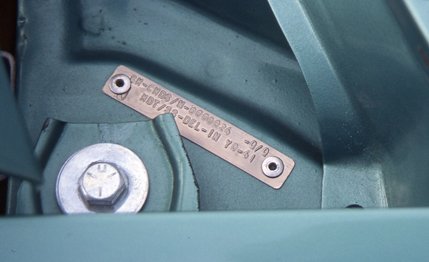On the line was a one-time women’s clothing retailer and sometime Texan restaurateur and tow-truck operator by the name of Kenny Bernstein. Bernstein recognized that drag racing was moving toward a big-money future and he was ready. His Funny Car had a disciplined crew that dressed in sharp uniforms, and his cars were just as well-prepared. He had won the Winston World IHRA Funny Car championship in 1979 and finished third in NHRA Funny Car points in 1981. His business acumen and optimistic winner’s attitude helped hook the king of sponsors, Anheuser-Busch, which was willing to provide a vast source of cash if that’s what was needed to win. To put that money to work, Bernstein offered his crew-chief job to Armstrong. “At the time, it seemed like a perfect match,” Armstrong says.
That wasn’t obvious from the start. That first year, the team dropped from third to fourth. “The car didn’t run worth a damn,” Armstrong recalls. “We had to adjust Kenny’s driving style to the car, and so forth.” In 1983, they finished third in NHRA and fourth in the IHRA. On Labor Day weekend that year, Bernstein won the Big Bud Shootout and the U.S. Nationals at Indianapolis Raceway Park, taking home $80,000 in prize money—a record for drag racing at the time.
Freed from monetary woes and driving in races, Armstrong pushed the boundaries of Funny Car power and speed. He worked up radical designs for ignition systems and was the first to use dual fuel pumps. He devised a two-speed blower transmission that he was willing to make available to all drag racers. But it so threatened the speed status quo that it was immediately disqualified by the NHRA.
In 1984, Armstrong rented a Lockheed wind tunnel to refine the car’s aerodynamics. It paid off when Bernstein shattered the 260-mph Funny Car speed barrier, though Bernstein again finished third that year. In 1985, the team won its first Funny Car title.
The following year, Armstrong pioneered the use of a computer (the RacePak) to reliably record a car’s performance data during a race. He made an astonishing discovery about clutches—they were slipping not just at the start, but throughout the entire race. With clutch experts Lanny and Tony Miglizzi, he quietly developed a two-stage locking clutch. At the ’86 U.S. Nationals in Indianapolis, Bernstein set another speed record of 271.41 mph and went on to win a second Funny Car championship.
|
|
|
VIN plates like this one make Chevy enthusiasts enthusiastic. |
Wild, technology-packed entries like Bernstein’s “Batmobile” carried him to a third title in 1987, breaking three world speed records in one day along the way. In 1988, the Bernstein team matched an all-time record set by Don Prudhomme of four straight Funny Car titles.
Bernstein switched from Funny Cars to Top Fuel dragsters in 1990, on Armstrong’s notion that they were safer and faster and Bernstein’s notion that they got more exposure. The duo has yet to win a championship, placing eighth in NHRA points in 1990, second in 1991, third in 1992 and 1993, and sixth last year. They have gotten exposure, however. Bernstein’s dragster in 1992 was the first car ever to surpass 300 mph in the quarter-mile. “Real, real significant,” says Armstrong. “It’s one of those things that nobody will ever forget.” On October 30, 1994, at Pomona, Bernstein set a national speed record in Top Fuel with an astonishing 314.46-mph pass. As of May 1995, Bernstein has 26 runs at 300-plus-mph to his name, an NHRA record.
In big-time drag racing, a crew chief with Armstrong’s résumé commands well into six figures, a long way from the pay of an Esso jockey in Calgary. It has allowed him to put together an impressive car collection that includes a ’64 Dodge A-990 Race Hemi, a ’57 Plymouth Fury, three ’63 Ford T-Birds, a ’71 DeTomaso Pantera, an ’83 De Lorean, as well as a couple of 409 Chevys dating back to those years in Calgary: a near-perfect ’62 Bel Air two-door hardtop and a ’62 SS convertible. But by 1986, he still didn’t have the most desirable of the 409 Chevys—the rare ’61 with the Super Sport package.
On November 18, 1987, Armstrong noticed a frugally worded ad in the Los Angeles Times classifieds: ’61 Chev Impala 409, $2900. In the dark that night, illuminated by a flashlight, he inspected the Impala. It needed work. The owner didn’t know if the engine was original. Nor did Armstrong, who couldn’t read the dirty serial numbers in the dark. But there were corroded SS emblems on the car, and other potential suitors were there with their flashlights as well. Armstrong offered $3500 on the spot, and suddenly he owned what appeared to be a ’61 Impala SS409.
He soon discovered it was the real McCoy. The factory Super Sport package elements were in place, and the serial number included a Q, indicating a factory 409 engine. More revealing, was the sequence number “0000026.” All those zeros usually indicate a car has been especially built for GM executives in Detroit, Armstrong learned. His SS409 could be the first one ever made.
So Armstrong’s plans for its restoration became more serious. Authentic trim and interior parts were easy to find, but the correct engine was not. This SS409 would have had a block from the first batch of 25 409s assembled in November 1960. Armstrong finally found one of the original blocks, with heads dated January 1961. This rare chunk of cast iron cost him a startling $10,000 at a parts dealer in Orange, California.
View Photos
View Photos


Leave a Reply